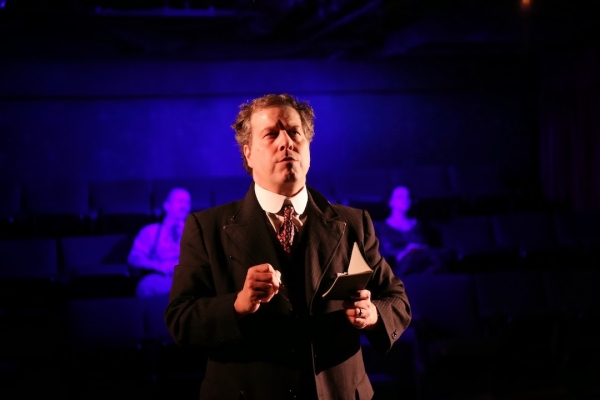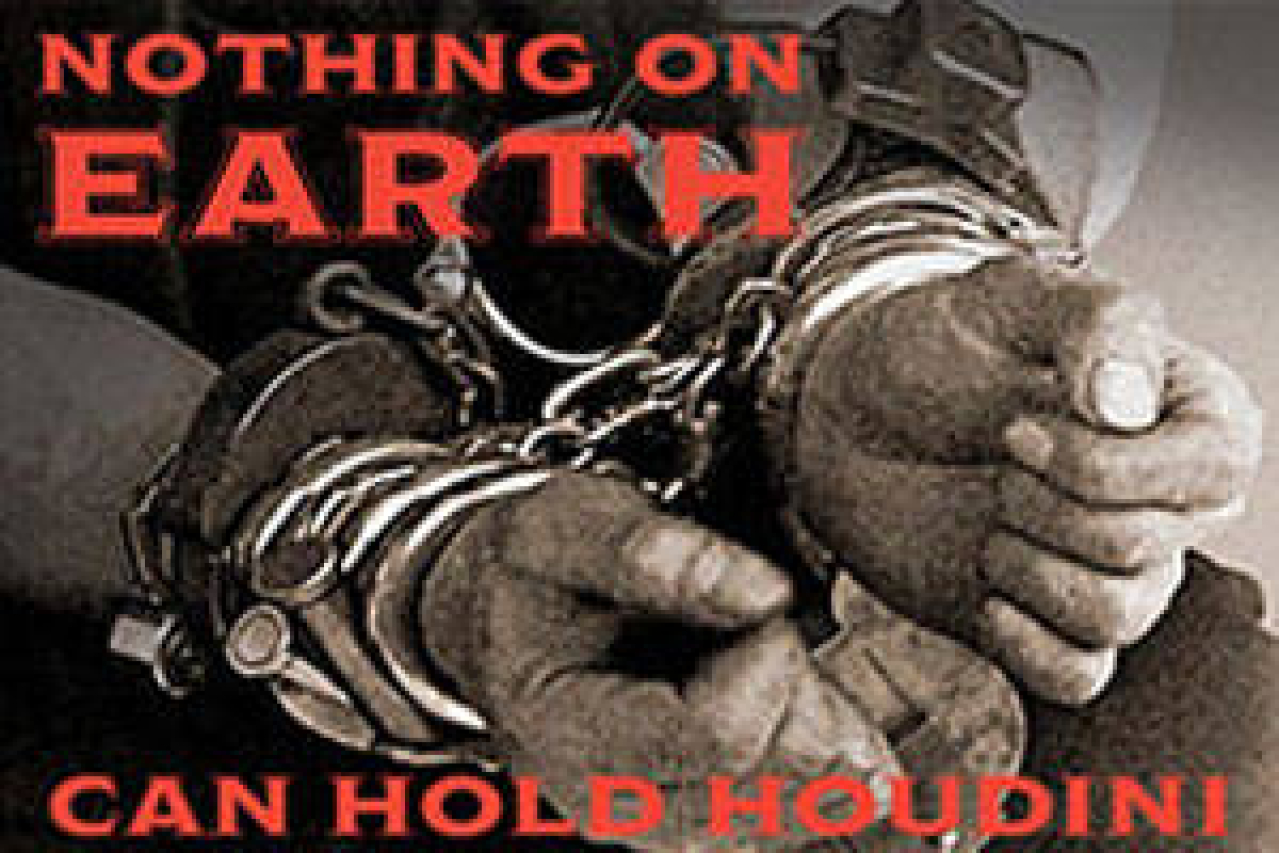Nothing on Earth (Can Hold Houdini)

(© Dixie Sheridan)
Harry Houdini is a character ripe for the stage. His wildly theatrical career as a magician, escape artist, and film actor offer a seemingly endless bounty of colorful stories just waiting to be given their proper dramatic flourish. Axis Theatre Artistic Director Randy Sharp has carved out Houdini's years as a spiritualist debunker for her world premiere production of Nothing on Earth (Can Hold Houdini) — perhaps the most peculiar of the master escapist's many professional endeavors. Yet, the story's inherent intrigue is lost in a haze of moving parts that never quite come together to make a coherent piece of theater.
In the final years of his life, Houdini took to discrediting charlatan clairvoyants who attempted to cash in on a prize, which, in 1922, Scientific American magazine offered to the first proven medium. George Demas stars as Houdini during the time of this unique crusade, with Sharp zeroing in on his mission to expose the fraudulent Mina "Margery" Crandon (Lynn Mancinelli), wife of wealthy Boston surgeon LeRoi Crandon (Brian Barnhart) and one of the most notable mediums of the 1920s. Sharp's script checks out in terms of historical accuracy but does little to draw out the elements that make the story theatrically compelling. She hints at several back stories in an attempt to bring these historic figures to life, including Houdini's desperate desire to connect with his deceased mother, the deterioration of his close friendship with steadfast believer Sir Arthur Conan Doyle (played by Spencer Aste), and a few obscure references to Margery's son that records show Dr. Crandon adopted after their marriage. None of these stories, however, are fully explored, leaving the characters just as enigmatic as they are in the history books.
Demas paints a stone-faced portrait of the famed illusionist, donning his signature long black frock coat (selected by costume designer Karl Ruckdeschel) and even throwing on a pair of handcuffs and a straitjacket to offer a few samples of Houdini's signature escape tricks. While he captures Houdini as a man of strong convictions, his nearly unflappable portrayal keeps us at arms length from the human weaknesses that Sharp hopes will make him a sympathetic character. The scenes where "Houdini" the performer takes the stage to present his feats of magic also lose their opportunity to highlight his more vulnerable moments. Though Houdini's showmanship, admittedly, is a tall order to fill, Sharp's lifeless staging of what should be some of the play's most theatrical events fail to contrast his private character.
The remainder of the characters are similarly stuck in this one-dimensional rut. Aste's portrayal of Doyle presents little beyond a man in mourning for his deceased son, while Mancinelli and Barnhart do not yet seem to have settled on the details of the Crandons' oddly cold spousal relationship that Sharp has left particularly ambiguous. The two séances that Mancinelli leads (featuring the eerie lighting designs of David Zeffren) are undoubtedly the production's most gripping sequences, like theatrical defibrillators jolting the sleepy production into consciousness. Unfortunately, we never quite find a steady pulse.











